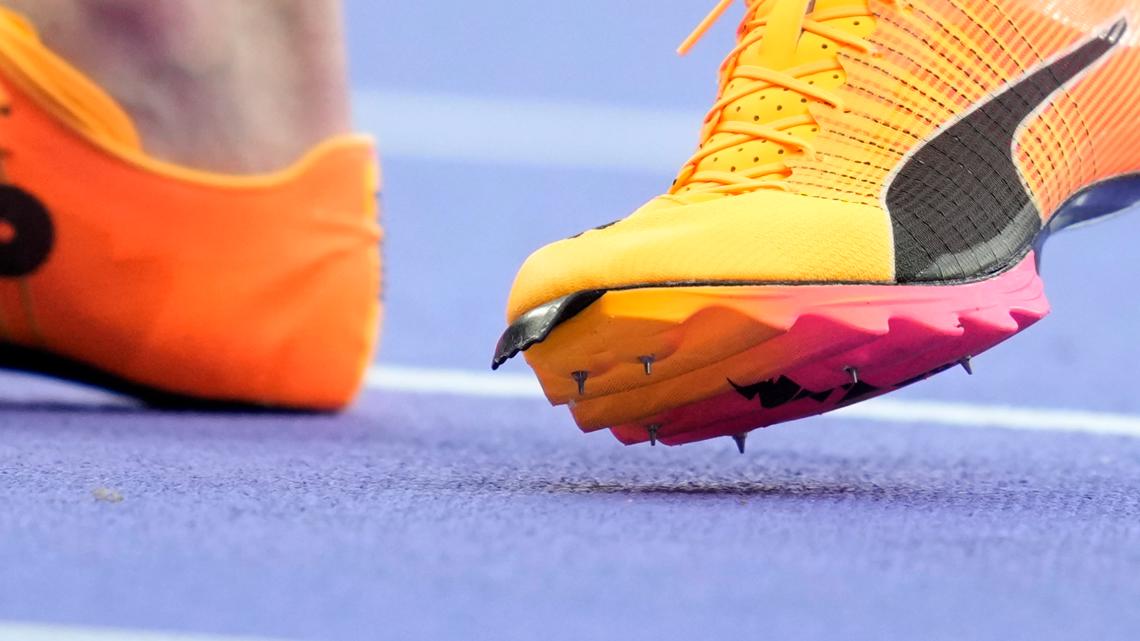WASHINGTON — A frequent sight after Olympic track and field races is the athletes sitting down immediately after finishing the competition and removing their shoes. But why are the world's top athletes so eager to remove their footwear?
It all comes down to comfort. The shoes Olympic runners use for competition are built with speed, not comfort, in mind and they can be fairly unfriendly to the feet inside, if reports across the internet can be believed.
"They're supposed to be uncomfortable," as one Reddit user put it. "They say when you finish a race first thing you do is loosen your spikes and then throw your hands in celebration."
What are track spikes?
Track spikes are a kind of shoe designed to dig into the surface of a sprinting track and find extra purchase to propel the runner forward. Look-wise, they're a mix between soccer cleats and tennis shoes. They're usually pointed up at the tip of the foot, with small metal pins in the bottom.
The needle-like pins can dig into the synthetic rubber of a race track to grip it, allowing an athlete to push off with extra force.


Why are they so uncomfortable?
Those same pins that give Olympic athletes an edge aren't great for everyday walking. On concrete, asphalt or really anything that isn't soft and easy to dig into like turf or rubber, it's literally walking around on pins and needles.
There's also the tightness factor. It's much easier to run in a pair of tightly-laced running shoes than a pair of flip-flops. That's because the laced shoes hold tightly to your foot in a way the sandals don't.


For normal non-Olympians, you want about 3/8 to 1/2 of an inch between the end of your toe and the front of the shoe (about the width of your thumb). With track spikes, there's much less of a gap, with the shoe stopping just before the toenail of the athlete wearing them. Over long distances, this can cause some irritation or soreness as the shoe smacks the front of the foot.
The spikes can also be dangerous. There's a phenomenon called being "spiked" where a runner is stabbed in the leg by the pins of the runner ahead of them as they follow closely behind.


Spikes down to a science
Everything from the shape of the shoe to the number of the spikes has been rigorously tested for top-class athletes.
According to GazelleSports.com, the number of spikes or pins at the bottom of a particular shoe can make a difference around the margins of a race, especially around the curves.
"For instance, the length of the spike plate may vary depending on whether your event has one or no turns versus longer sprints that involve multiple turns," the website says.
Basically, the shorter the race, the more spikes. The reason: When making a turn, such as those involved in a 1500m race, spikes can get stuck in the track, making it harder to pivot. And when races are sometimes decided by a fraction of a second, that can make a difference between gold and silver.

